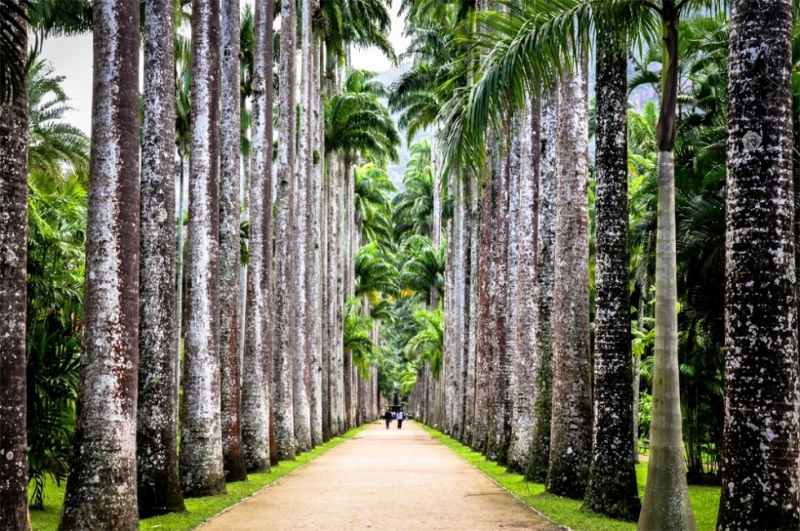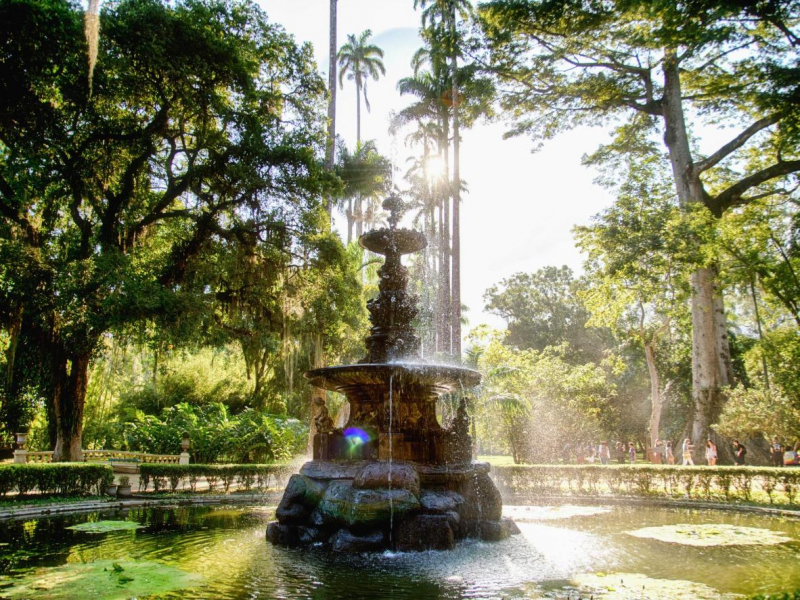The Rio de Janeiro Botanical Garden
The Rio de Janeiro Botanical Garden, one of the best botanical gardens in the world, is located in the Jardim Botânico district of Rio de Janeiro's South Zone. The Botanical Garden displays a wide range of Brazilian and international flora. There are around 6,500 species (some of which are endangered) spread across an area of 54 hectares (130 acres), as well as multiple greenhouses. The garden also has historical, cultural, and archaeological monuments. There is a significant research facility, which has the most comprehensive botany library in the country, with over 32,000 volumes.
King John VI of Portugal established it in 1808. The garden, which was originally meant for the acclimatization of spices such as nutmeg, pepper, and cinnamon imported from the West Indies, opened to the public in 1822 and is now open during daylight hours every day except December 25 and January 1.
The 140-hectare (350-acre) park is located at the foot of Corcovado Mountain, well below the right arm of Christ the Redeemer's monument, and has over 6,000 distinct types of tropical and subtropical plants and trees, including 900 different palm tree varieties. The Avenue of Royal Palms is a 750-meter (2,460-foot) line of 134 palms that leads from the gardens' entrance. All of these palms descended from a single tree, the Palma Mater, which was long ago devastated by lightning. Only around 40% of the park is developed, with the rest being Atlantic Forest growing up in the Corcovado mountains. UNESCO classified the park as a biosphere reserve in 1992, and it is protected by the Patrimônio Histórico e Artistico Nacional.
Bromeliads, orchids, carnivorous plants, and cacti are among the vegetation found in the gardens. These include Brazil's largest botanical library, dried fruit collections, unusual Brazilian flora, and numerous pictures. The painted cast-iron Fountain of the Muses was produced in Derby, UK, and was installed as part of the landscaping by English painter John Tydall at Henrique Lage's mansion in Largo da Lapa until 1895.
The park is home to 140 bird species, many of which have become habituated to humans and are thus more easier to view than in the wild. The channel-billed toucan, rusty-margined guan, slaty-breasted wood rail, and the endangered indigenous white-necked hawk are among them. The Botanical Gardens are also home to capuchin monkeys and tufted-eared marmosets.
Founded: June 13, 1808
Location: Rio de Janeiro, Brazil
Land area: 54 hectares (130 acres)













